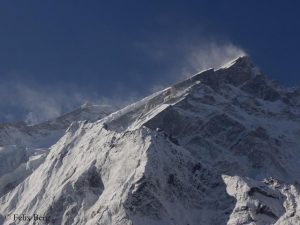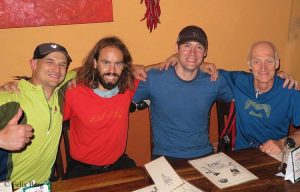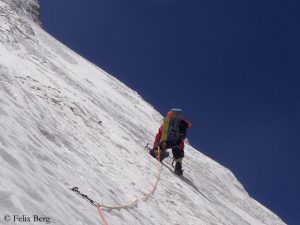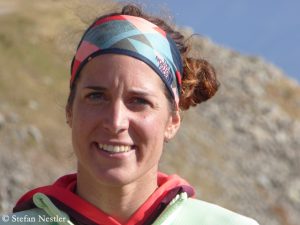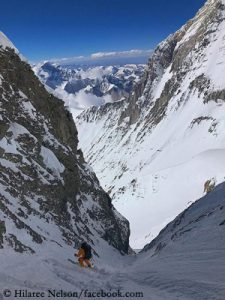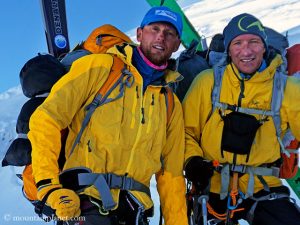Felix Berg: “Extremely spontaneous expedition”
Unpredictability is an essential part of adventure. And the more ambitious a mountain project, the greater is the uncertainty as to whether it really ends with a success. Thus the Italians Tamara Lunger and Simone Moro, who had planned to traverse the four summits of the Kangchenjunga massif without bottled oxygen, had to turn back without having reached a single summit. Two attempts ended at 7,200 meters, because Simone suffered from stomach ache. The German Thomas Laemmle returned empty-handed from Makalu, after four (!) failed summit attempts without supplemental oxygen and Sherpa support, always forced back by bad weather. And on the Northwest Face of Annapurna, the 33-year-old Pole Adam Bielecki, the 63-year-old Briton Rick Allen and the 36-year-old German Felix Berg had to capitulate halfway. “It was completely the right decision to turn around,” Felix tells me. “On the day of our descent, there was heavy snowfall. It would not have been possible with the weather.”
Alternative destination searched and found
From the beginning, the expedition was star-crossed. After the arrival in Kathmandu the team, at that time still including the 40-year-old Canadian Louis Rousseau, had to change their plan at short notice. Originally, the four climbers had wanted to open a new route through the Cho Oyu North Face, but the Chinese refused to issue entry visa for Tibet for all those who had stayed in Pakistan for more than a month without a break during the last three years. The difficult search for an alternative destination goal began. “Where can you find a beautiful wall on an eight-thousander?”, asked Felix and Co. They decided for the rarely tried Northwest Face of Annapurna, with the goal of finding a new, direct route to the summit. A first attempt to scale Tilicho Peak near Annapurna for acclimatization failed due to bad weather. Then Rousseau had to return home because his time budget for the expedition had run out. Bielecki, Allen and Berg managed in the second attempt to reach the summit of Tilicho Peak and finally tackled the Annapurna Northwest Face.
Tent torn, sleeping bag lost
“We had food for eight days when we entered the wall,” says Felix. “It was continuously about 50 degrees steep, never less than 40 degrees. We had difficulties to find bivouac places.” For the first night, they managed to pitch up their tent on a small platform so that they at least could sit in a row next to each other. For the second bivouac, they had to use a small, sloping rock sledge at 6,500 meters. “By contrast, the sitting bivouac of the previous night had been luxurious,” Rick Allen wrote. “A portaledge would have been more appropriate than a tent,” says Felix. The tent tore, and through the hole, one of the sleeping bags fell into the depth. This was the final signal for turning around. Back in the Base Camp, the three climbers wanted to leave for Kathmandu. But first there were no helicopters available. “They were all on Everest, for rescue flights,” says Felix Berg.
After all, there was a helicopter that brought Bielecki, Allen and Berg back to Kathmandu. “It was an extremely spontaneous expedition,” says Felix. “But even though we were a rather mixed bunch of climbers, we got on and worked together very well. For sure we were not the last time together en route.”



